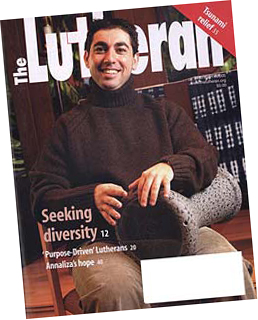An Antiquated Worldview Stifles the Voice of the Denomination
 The turmoil in mainline churches is symptomatic. The concept of hierarchy is becoming outdated. In a decade or so we look back at how we did things before the computer revolution with the same incredulity we experience today when we review the history of the Crusades or slavery.
The turmoil in mainline churches is symptomatic. The concept of hierarchy is becoming outdated. In a decade or so we look back at how we did things before the computer revolution with the same incredulity we experience today when we review the history of the Crusades or slavery.
Until then there will be struggle as hierarchies try to hang on. It doesn’t have to be ugly.
A hierarchy that remembers that in the church we exist to serve is actually well positioned to meet the new age.
A hierarchy that is focused on its own power, importance and preservation will topple.
People who have embraced the new world can view what’s happening with amusement—if they are not part of tumultuous transition, that is.
Church leaders are slow to understand the gift that has been handed to them with social media.
We see it with the pope. He will tweet but he will not follow. The power of Twitter is in following. But popes and bishops are tempted to see that as beneath them. Communication has been one way for thousands of years. This is to be expected.
We will soon see it in religious social services. it will not be long before religious social service agencies admit that their association with a denomination may deter mission efforts. They can now reach volunteers and supporters more easily themselves than through national or regional church efforts.
American Roman Catholic nuns have already experienced this.
Similarly, mission efforts that rely on denominational funding will soon realize that they are not as in touch with the people who support them as they could be without the filter of hierarchy.
How Church Hierarchies Are Unprepared for Modern Publishing
There are also big changes in church publishing—or there should be.
Church hierarchies were once needed to support church publishing. Their pooled resources were the only way a denomination could afford the cost. Because they were needed to fund publishing, they got used to thinking that they were needed to control what was written.
That day is over. Anyone can publish.
But our denomination is stuck trying to adapt old publishing models to the new media. They are missing the fact that the whole game has changed.
Unlike some of the other things mentioned, national church publishing can still play a major —but very different—role.
First, the regional and national church should make it a mission priority for every congregation to become familiar with social media. There is no excuse for any congregation to not have a web site or blog. They cannot be effective today without one. Everyone checks online for everything these days. No web site. Few visitors.
More important, churches and pastors must learn to use social media. Having a web site is one thing. Using it as a mission tool is another. This can no longer be overlooked and the regional and national church can lead the way.
If the denomination cares about member churches, they should help them make this transition. Both large and small churches find this to be daunting. The denominational and national church could and should help. Make it a mission priority and make sure pastors are trained to use social media.
Before they do this, they need to understand the power of the web themselves. In this they are missing the boat.
Standing on the dock and watching the ship of church sail
The ELCA publishes a “house” magazine. It is called The Lutheran. It contains a little bit of denominational news and feature stories of how the denomination and its congregations work in mission.
The Lutheran mails to 200,000 subscribers (only a small percentage of its 4 million membership).
It is also online. Sort of.
If the magazine prints 200,000 magazines, those magazines — assuming some are shared — might result in 300,000 readers—still a small fraction of total members.
An open and free online readership could easily magnify this reach. A good article might get 100,000 reads and then be passed onto 500,000 who might then pass it on to 2 million others. Wow! Imagine reaching the world with your message every month. Exciting!
But what does The Lutheran do? They feed you about ten lines of a story online and ask you to pay to read the rest. They limit dialog on the articles to subscribers. No pay. No say.
Engagement is the goal of almost every organization these days. Corporations understand that engagement is pivotal to relationships, sales, their mission and survival. Meanwhile, the church barricades themselves from engagement!
They are missing out on the social nature and evangelical power of the web. When they place that “pay to play” obstacle between them and their readers, they keep them from further sharing the good news. (Explain that to advertisers!)
Of course, they are interested in subscriptions. That’s the old publishing model. But The Lutheran is a “house” magazine. It should be looking for ways to get the message out to everyone—especially to people who just happen along who might be learning about the denomination from a friend who sent them a link.
They are hampering their own mission.
In the new world, religious magazines should explore a new funding model. Perhaps their work should be totally subsidized. Forget subscriptions.
There are other ways of adding to the income while enhancing the dialog within the church. Partner with denominational authors. Be a Kindle storefront for them. Empower the news potential of every congregation and every potential writer in the denomination. It’s new territory with great potential.
The denominational magazine will then be so much more powerful and able to attract a new level of advertising.
If preserving the publishing model of the past is the goal, keep it subscription-based with limited reach. A private club. All the members breathing the same stale air.
If influence and reach are the goals of church publishing, content must be free.

